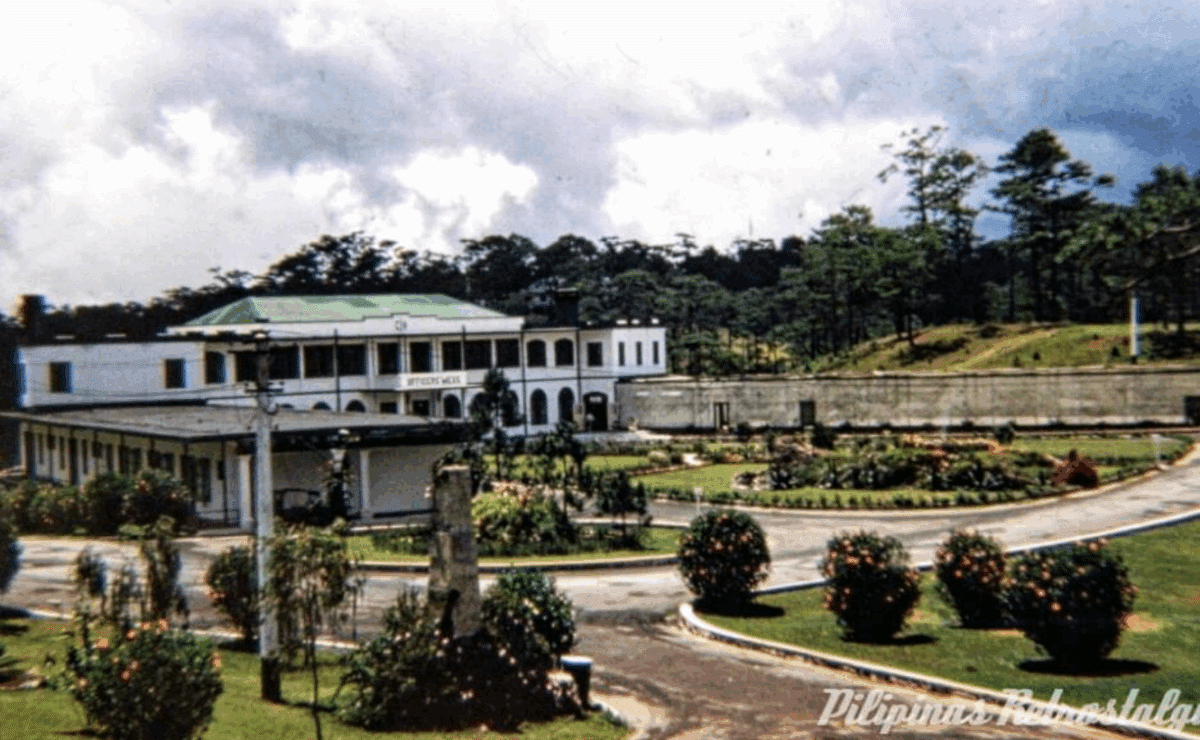Camp John Hay: The American base in the mountains of Northern Luzon

Officers’ Mess Building at Camp John Hay in Baguio City circa 1949 | Photo from Pilipinas Retrostalgia/Facebook
Camp John Hay was named after the United States Secretary of State, John Milton Hay. Secretary Hay served the United States government during the Spanish-American War in 1898 and during the “benevolent assimilation” of the Philippines. The camp was established in 1900 during the height of the Philippine-American War.
The initial camp was 535 acres in size. President Theodore Roosevelt created the military reservation by executive order on Oct. 1, 1903. The camp was in the mountains of Northern Luzon at a site called Baguio.
The main purpose of the camp was to escape from the heat and humidity in Manila. The camp had refreshingly cool nights and fragrant pine trees covering the grounds of the facility. It was an ideal location for rest and relaxation. American military personnel, government employees and civilians had access to the base.
Camp John Hay, by a resolution, was designated as the summer capital of the American colonial government in the Philippines. The Philippine Commission, including Governor-General William Howard Taft and his family, spent their summers at Camp John Hay. The camp expanded and grew over the years to 1,764 acres.
Initially, the journey and travel time from Manila and the lowlands of Central Luzon to the mountains in Northern Luzon was a major obstacle. In 1905, a road through the Bued River Valley was completed. The cost of the road was approximately $2 million. The road was named Kennon Road after the supervising engineer of the project.
In the early years of the camp, there was always competition between the US civilian government and the US military on who controlled Camp John Hay. The legal controversy was eventually decided by the US Supreme Court. The court ruled that the military had control of Camp John Hay.
The site was transferred to the military on Oct. 7, 1910. Initially, the military used the camp for its Signal Corps. The camp was still being used as a rest and relaxation site due to the pleasant weather.
Once the court’s ruling was final, the commanding officer of the Philippine Department had overall control of the camp. The head of the Philippine Department was Major General Franklin Bell. The general commanded the Philippine Department from 1911 to 1914. He had grand plans for improving Camp John Hay. He implemented many infrastructure and building projects, including a hydroelectric plant, an 18-hole golf course and an expanded and modern hospital.
By the 1920s, the camp had substantial growth. There were three companies of Philippine Scouts posted at the camp. The scouts lived in a section called Scout Barrio. The scouts were authorized to have their families with them in the barrio.
In 1940, the summer residence for the American High Commissioner was completed at Camp John Hay. The High Commissioner, Francis Bowes Sayre Sr., served in the role from 1939 to 1942. Unfortunately, his use of the summer residence was abruptly terminated by the Japanese invasion of the Philippines in December 1941.
Camp John Hay was bombed on Dec. 8, 1941. The date of the aerial attack was the same day as the attack and devastation at Clark, Iba, and Nichols Fields. By Dec. 27, 1941, the Imperial Japanese Army had captured Camp John Hay. The camp was used temporarily by the Japanese as an internment camp for American and allied civilians.
When the United States army returned to the Philippines in October 1944, the Japanese Imperial Army did not want the Filipino collaborators, known as the Second Philippine Republic, to be captured in Manila. The Japanese evacuated President Jose Laurel and his cabinet to Camp John Hay in Baguio. As the fighting intensified in Northern Luzon, President Laurel and his cabinet were sent by the Japanese to Tokyo.
General Tomoyuki Yamashita led the fight in Northern Luzon against the Americans. His troops committed multiple atrocities against Filipino civilians during their retreat to the mountains in the north. His forces dug numerous tunnels and other obstacles in the vicinity of Camp John Hay and Baguio.
After a two-month siege of Baguio, the Americans and Filipino guerrillas captured the area on April 28, 1945. Some Japanese holdouts in the vicinity were not defeated until June 14, 1945. On July 4, 1945, General Douglas MacArthur stated that the liberation of the Philippines was completed.
Today, Camp John Hay is a popular resort in Baguio. The site still provides a relaxing break and rest from the heat and humidity in most areas of the Philippines. The former American facility was transferred to the Philippine Government in 1991. Many of the buildings constructed during General Bell’s tenure are still standing. The historic buildings offer visitors a glance into the past.
Dennis Edward Flake is the author of three books on Philippine-American history. He is a Public Historian and a former park ranger in interpretation for the National Park Service at the Eisenhower National Historic Site in Gettysburg, PA. He can be contacted at: flakedennis@gmail.com

